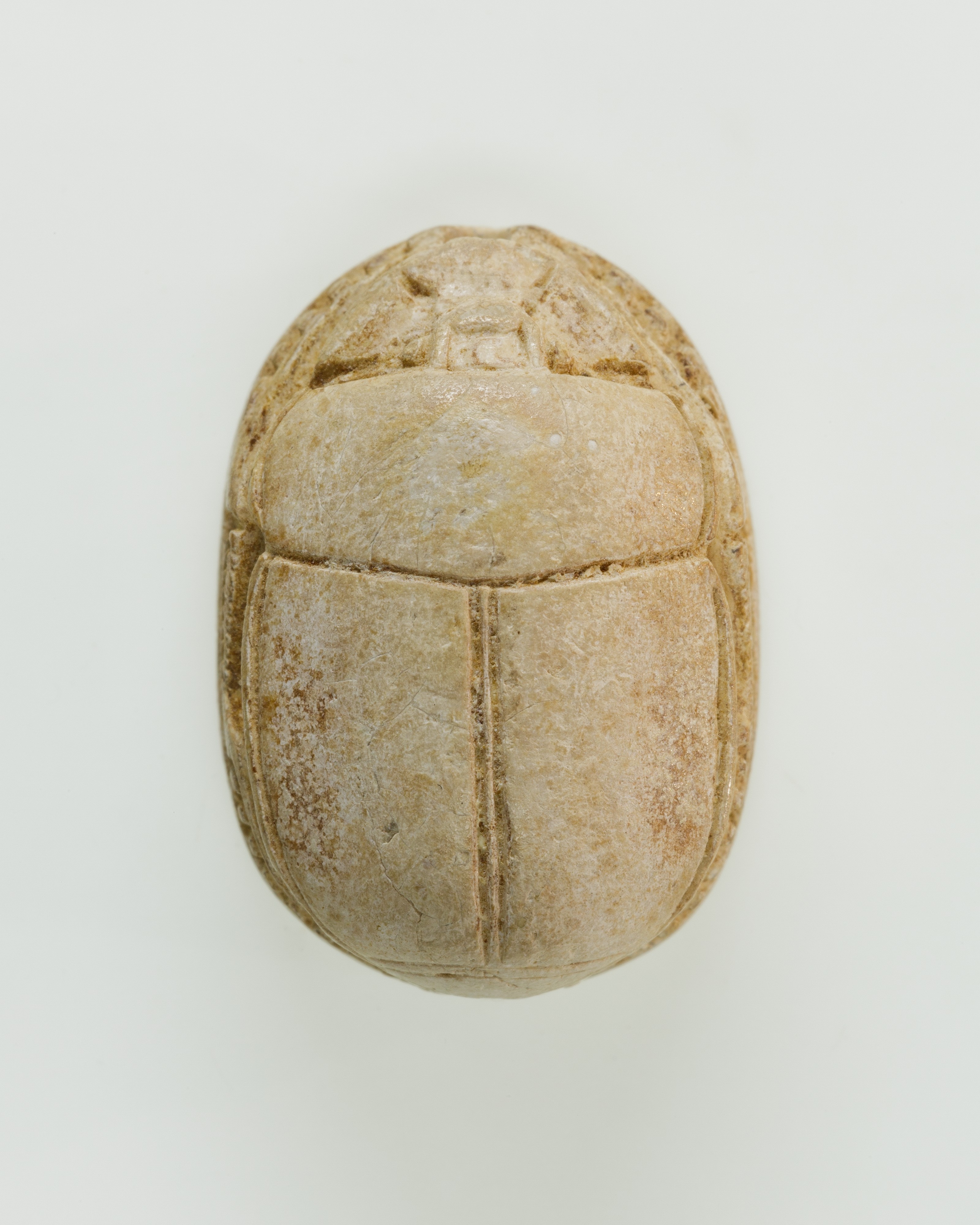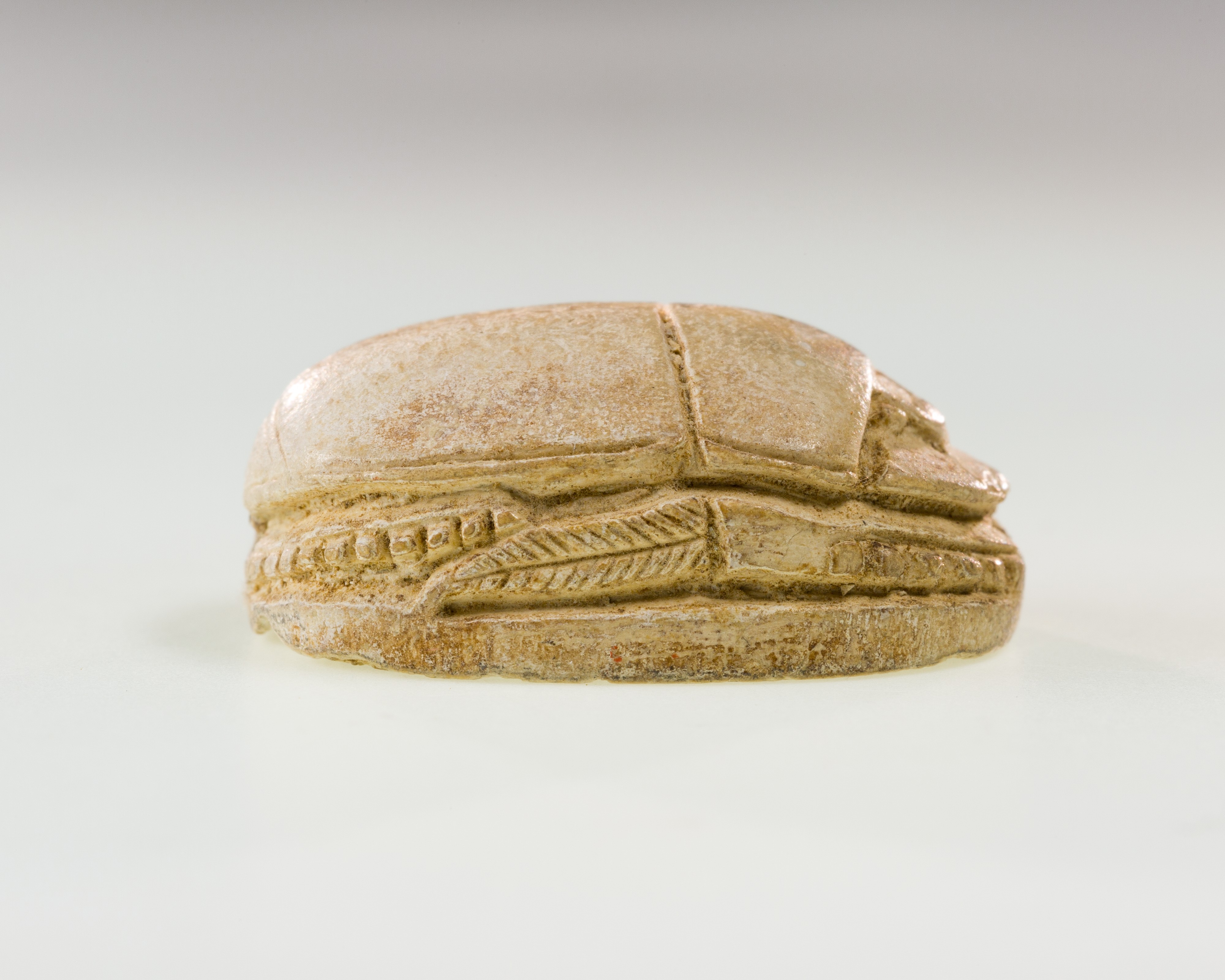Scarab Inscribed with Hieroglyphs
Middle Kingdom
The majority of design scarabs of the late Middle Kingdom (late Dynasty 12–Dynasty 13, ca. 1850–1640 B.C.) are decorated with symmetric compositions of hieroglyphs and/or scrolls. These signs are not meant to form words but are chosen for their positive, protective meaning.
This scarab is inscribed with a pair of wedjat-eyes, the sign of life (ankh), the sign for good and beautiful (nefer), and the djed-pillar.
Due to rights restrictions, this image cannot be enlarged, viewed at full screen, or downloaded.
This artwork is meant to be viewed from right to left. Scroll left to view more.





